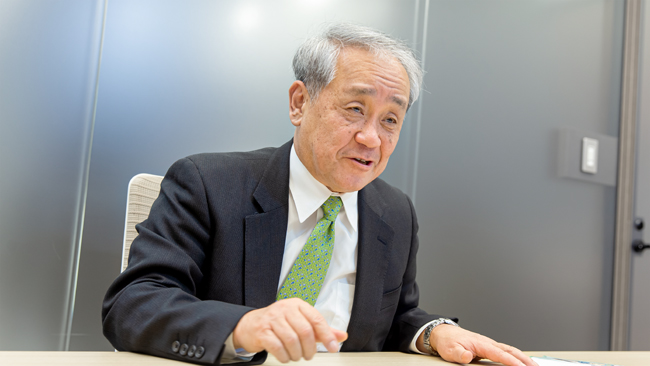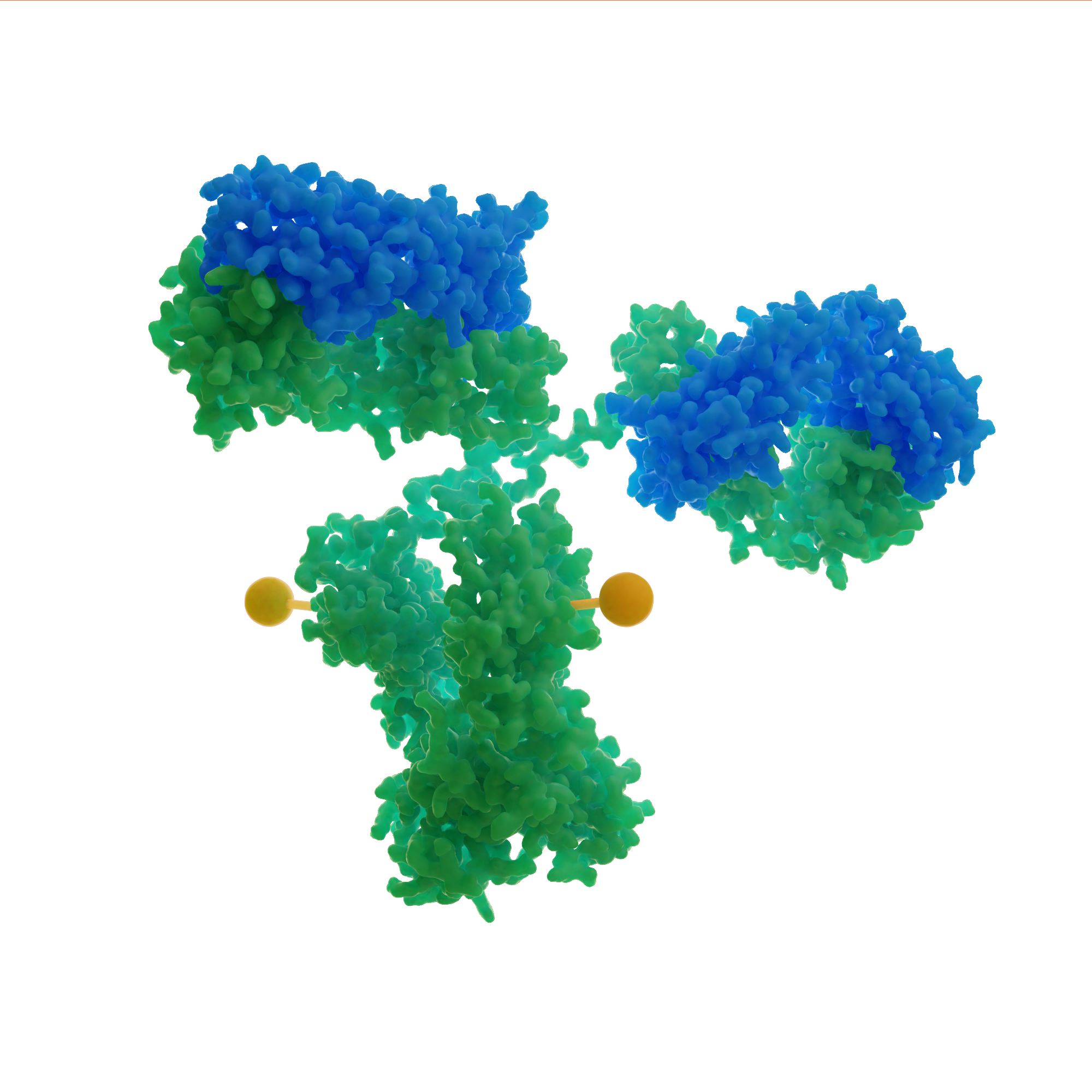Surprising the world with its HER2-directed ADC (antibody-drug conjugate) that inhibits HER2, was a major turning point for Daiichi Sankyo, and I think the Biologics Oversight Function played a big role in this success. Daiichi Sankyo had been focused on researching and developing small molecule drugs at the time when I was brought in to help build a strong foundation in biopharmaceuticals. As soon as joining the company, I began urging top management to build a robust internal organization, including manufacturing technology, to fulfill their goal of becoming a leading biopharmaceutical company.
In 2013, I got my wish: the Biologics Oversight Function was formed and I became its first head. Naturally, not everything since then has gone exactly as planned. There were some in the company who doubted that Daiichi Sankyo could compete in the world of ADCs against the overseas pharmaceutical giants. However, we were undeterred. Having thoroughly analyzed our clinical trial data for our HER2-directed ADC, we were confident in its potential for success. And as it turns out, we were right. Looking back at that time, I think we had a strong group of unique researchers, which made for a free-flowing and innovative atmosphere. I think you need groups like that to achieve exemplary teamwork.

Feeling that our mission was to revolutionize Daiichi Sankyo through biopharmaceutical development was really what brought the team together. Nobody waited for orders—everyone was powered by their own initiative. This was of course true of the key leaders, Toru Takahashi1, Toshinori Agatsuma2, Masayuki Yabuta3, and Yuki Abe4, but also for all of the researchers working under these leaders were proactive in bringing their opinions forward. We had open working relationships, and productivity was really high.
Today, in addition to the HER2-directed ADC, development is moving forward on two more ADCs, a HER3-directed ADC and a TROP-directed ADC, Of course industry technology will eventually catch up with us. That’s why Daiichi Sankyo needs to think beyond ADCs and focus on our “3 and Alpha” strategy. The “3” refers to our current three main ADCs, while “Alpha” refers to our drive to develop new core technologies. We are taking up the challenge of new focused modalities, like gene therapy and nucleic acid medicine, and developing many interesting technologies. What we need to do now is rapidly assess these seeds of technology and be proactive and passionate about raising to maturity everything that shows potential. After all, a great many patients may be depending on our results.
When it comes to deciding what new drugs to develop, giving the go-ahead is no simple matter. There is a sense that everything coming out of R&D must score 100 out of 100 on our internal system of evaluating its potential to succeed. Even if something scores high, we still need to develop it further, get approval, and the deliver it to the customer in order to truly fulfill our obligation. It’s important for those like myself in R&D leadership to be ready to identify and green-light a real possibility, even if it’s scoring a low 50 at that stage. On the other hand, it is also our role to say “no” when the data comes in and the score adds up to a 99 instead of the required 100.
An R&D culture born of valuing people
As Global Head of R&D, it’s my job to develop our organization into one worthy of our standing as a global company, to develop our people, and to develop our “ONE Daiichi Sankyo” culture. Every person has both strengths and weaknesses. At Daiichi Sankyo, we have a culture of valuing everyone. We welcome diversity, and our organization prioritizes cooperation.
Of course, it’s a bit more complex than words like “global” might suggest. Even within a global organization, everyone has values that may be influenced by local cultures. I’ve experienced working in both US and Japanese organizations, and my goal is to integrate the best of both worlds to create an organization that is extremely resilient yet flexible. In order to accomplish that, I think it’s important to establish space in which leaders and team members in every area can cross the boundaries of job title, age, and specialization and have honest discussions. From time to time, individual values may clash, but if it’s a clash that moves us forward, then it’s a clash worth having. When people speak to each other from the heart, they gain respect for each other’s values and are energized to aim for new heights.

Another goal of mine is to define what global R&D is supposed to be, and not imitate other global pharmaceutical giants. In the US, the distinction we make is that our goal is to serve patients globally rather than simply being a global pharma company. I believe there isn’t another global pharma company like ours that has such a strong R&D presence in Japan, so there simply isn’t a company to imitate in the first place.
I think it’s quite rare for innovation to arise from the work of a single genius in a company. Rather, it comes from teams building on their R&D and working day by day under the guidance of passionate leaders. We need to refine our perceptions, take our technologies and scientific understanding to the next level, and learn from our mistakes, while at the same time retaining a spirit of playful inquiry. We need to keep in mind that innovation is a product of the unexpected; innovation rarely comes from a conventional value chain. We need an R&D environment in which researchers can break old conventions and where they have the passion to overcome all obstacles, exercising their own judgment as leaders. Once this comes together, innovation emerges. Our own Biologics Division, which gave birth to our HER2-directed ADC, has been very much this kind of R&D team.
Taking on next-generation challenges and nurturing a positive culture
If we continue from our HER2-directed ADC to achieve more positive results with our other ADCs, the question arises as to whether today’s Daiichi Sankyo is ready to compete against the global pharmaceutical giants. While that would be no easy task, the fact is that we have become a pharmaceutical company that delivers drugs to patients worldwide of the same quality as the global pharmaceutical giants. In this sense, I believe we are now at a very important stage. So, how can we best build on our results and grow the company beyond ADCs? All Daiichi Sankyo employees need to have a sense of urgency about what lies five and ten years ahead, and we need to seriously consider our future.
At the same time, we must continue to nurture a culture and business style that is unique to Daiichi Sankyo. If we were simply to imitate the global pharmaceutical giants, we could lose what makes us special as a company. What we must do now is continue replicating the ONE Daiichi Sankyo R&D culture. We are an organization that welcomes diversity and is resilient yet flexible. It sounds simple, but I really think that identity is important. We need to maintain an R&D environment that’s free and flexible, one in which every individual is empowered to be passionate about his or her work.
I imagine someone considering a job in the industry and weighing the choice of joining us or joining an established global pharmaceutical giant. I want that person to think, “Daiichi Sankyo is a Japanese headquartered company; it would be very worthwhile and interesting to work for them.” In the future, there is going to be a need in the industry for R&D to synergize biopharmaceuticals and traditional chemical pharmaceuticals—or rather, a need for R&D that transcends this divide. I would ask our next-generation leaders to believe that the results they achieve in R&D can help even more patients and to have the passion to continue the challenge of innovation.
Finally, the motto of my university is, “Independent and Interactive Learning.” I didn’t study that hard in university, but I have since learned mostly by myself in a very free way. Back then, I was helped along the way by many people, and the same remains true today. I joined Daiichi Sankyo eleven years ago, was transferred to R&D seven years ago, and came to the US two years ago. All I’ve done, however, is light a bit of a fire here, and add a pinch of salt there—nothing special. The reason I have had any effect, and why the fire has continued to burn among our researchers and people involved in development, is that they have always had the power of a burning passion within them. I really feel that Daiichi Sankyo is a company overflowing with amazing people. I believe we have a great environment in which to develop our next-generation core technologies.